Social Media’s “Ideal” Body, According to AI
- 40% of AI-generated images overall depicted unrealistic body types.
- 37% of AI-generated images of women depicted unrealistic body types.
- 43% of AI-generated images of men depicted unrealistic body types.
- When it comes to women, AI-generated images tend to have a bias toward blonde hair, brown eyes, and olive skin.
- 37% of the images included blonde hair.
- 30% of the images included brown eyes.
- 53% of the images included olive skin.
- When it comes to men, AI-generated images tend to have a bias toward brown hair, brown eyes, and olive skin.
- 67% of the images included brown hair
- 23% of the images included brown eyes
- 63% of the images included olive skin.
- 47% of the images included facial hair.
A Look Through the Artificial Lens
Social media’s impact on children’s mental health has been a hot topic among psychologists lately, with some pointing to it being a source of body image and self-esteem problems. (1) Although young users might be the most impressionable, the pervasive promotion of idealized body types on these platforms also takes its toll on adults. (2)
This got us wondering: What exactly are the “ideal” body types being promoted by the billions of images on social media? And just how distorted are they from reality? Without being able to ask these apps directly, we turned to artificial intelligence (AI) to find out.
Let’s see what the AI image generators, Dall-E 2, Stable Diffusion, and Midjourney came up with. Warning: Their results were largely unrealistic.
Social Media’s “Ideal” Male and Female Figures
According to AI, social media images show a preference for how bodies should look overall, but there was some variation between what it expects of women and men.
Prompt 1: “The ‘perfect’ female body according to social media in 2023”
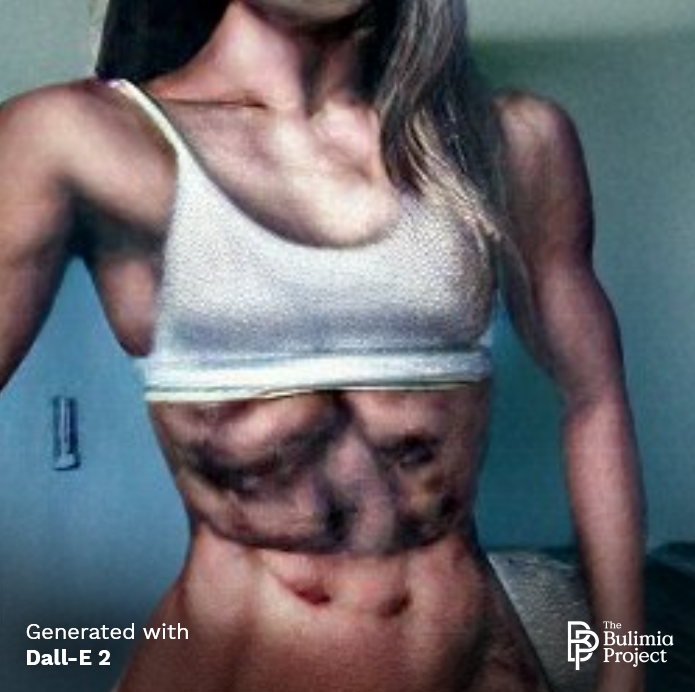
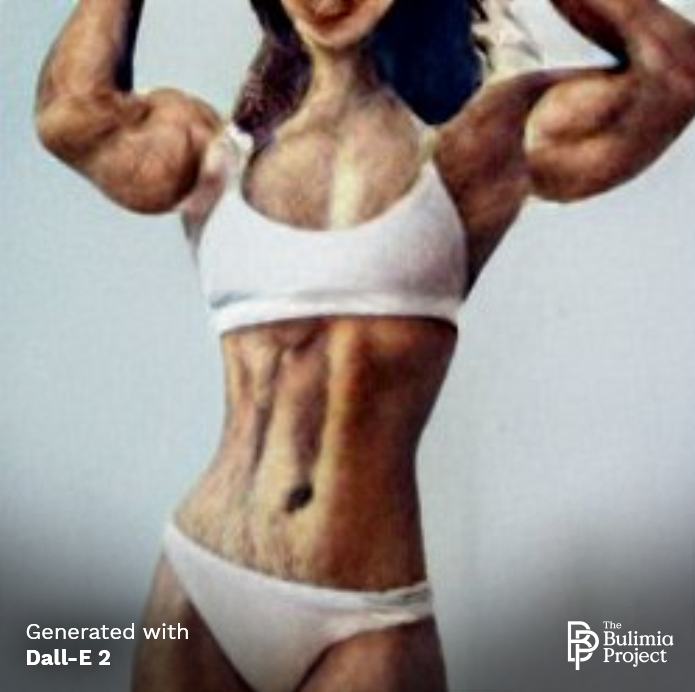
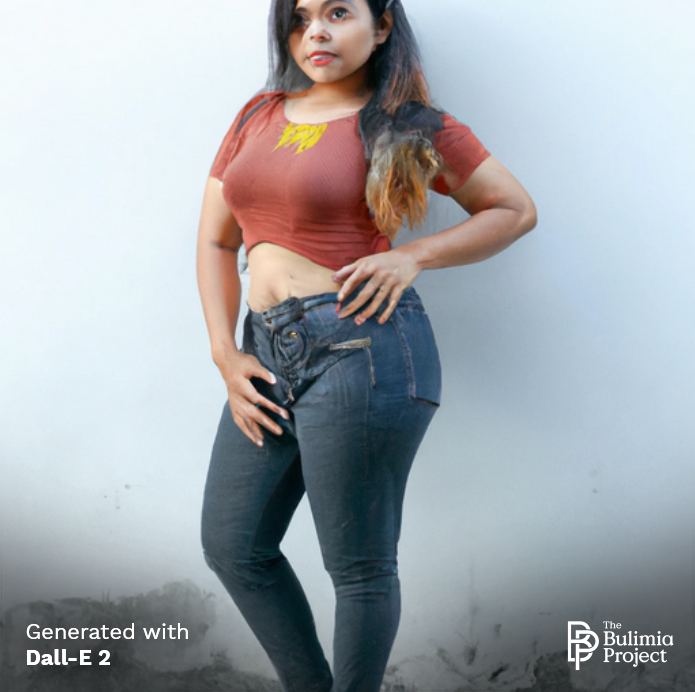
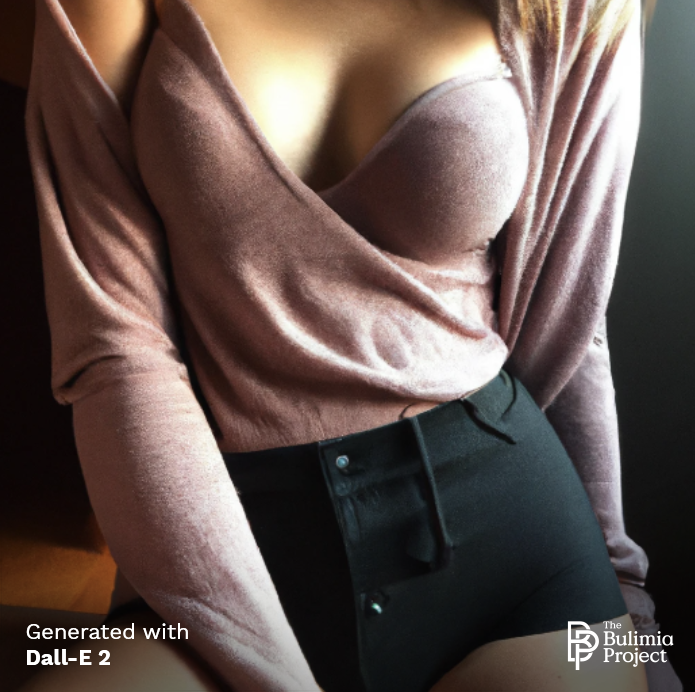
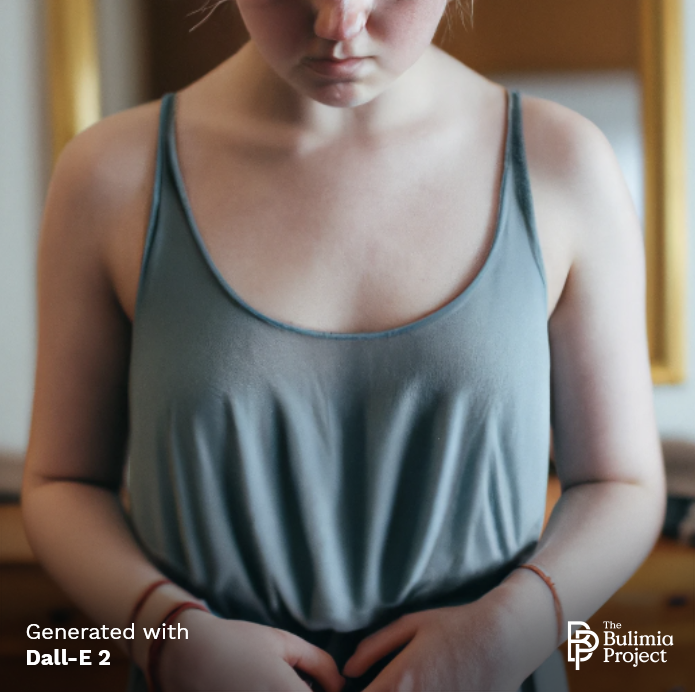
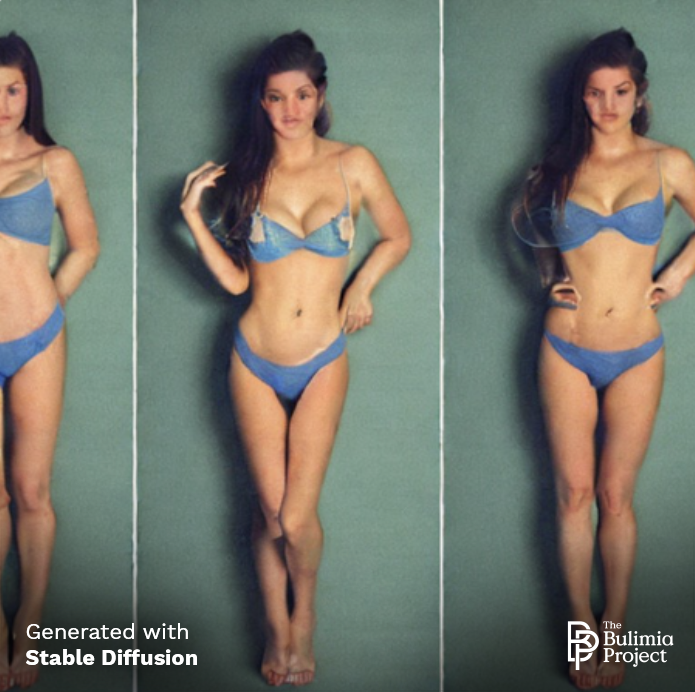
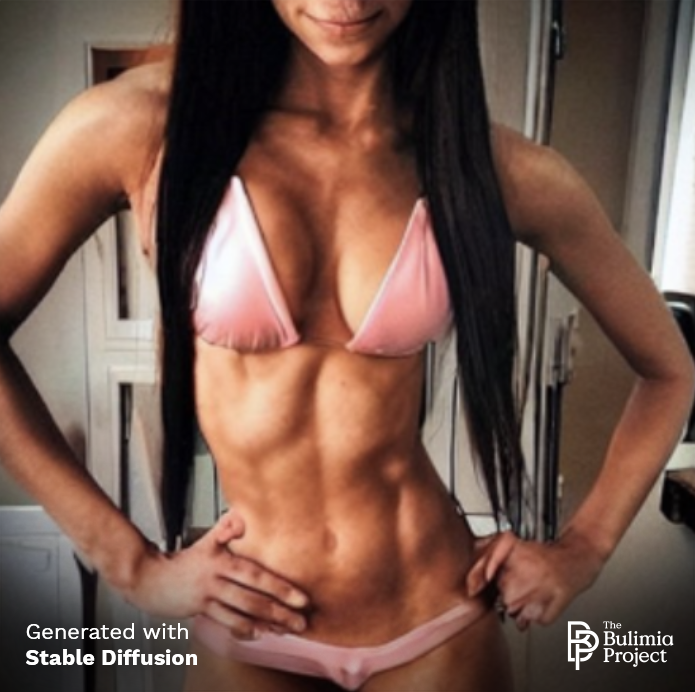
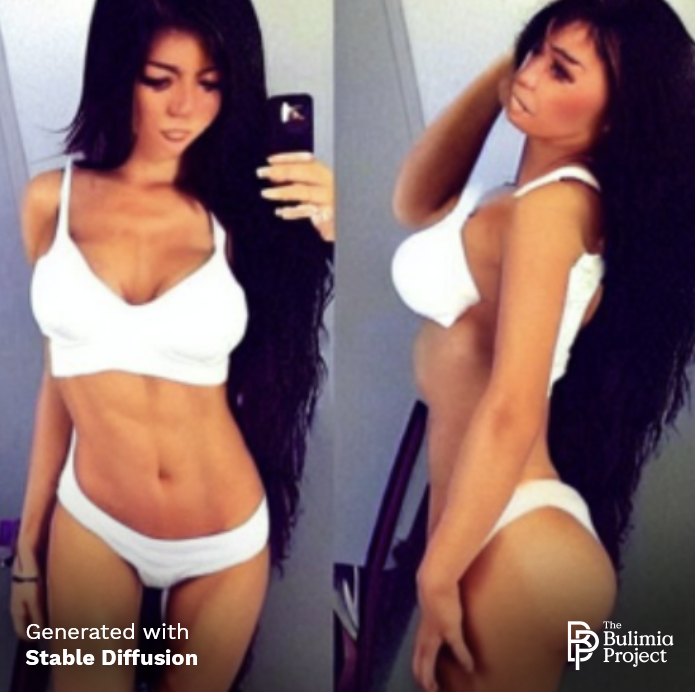
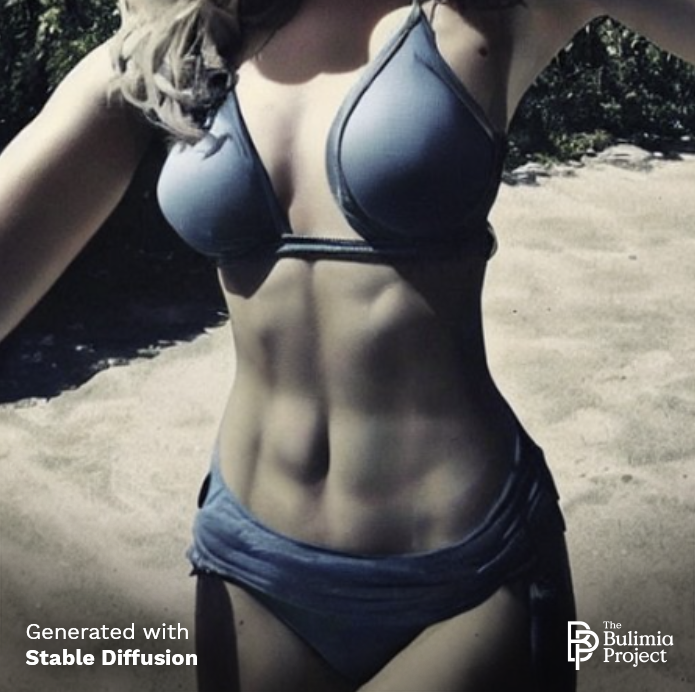
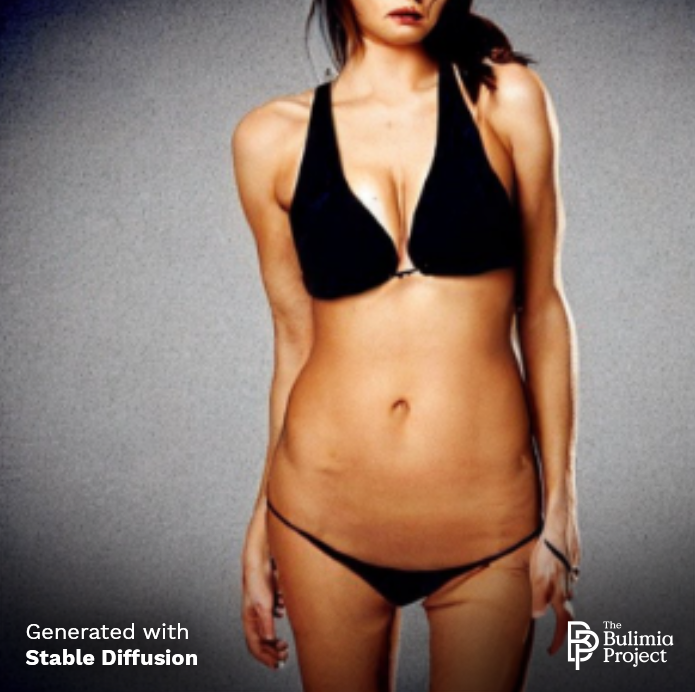
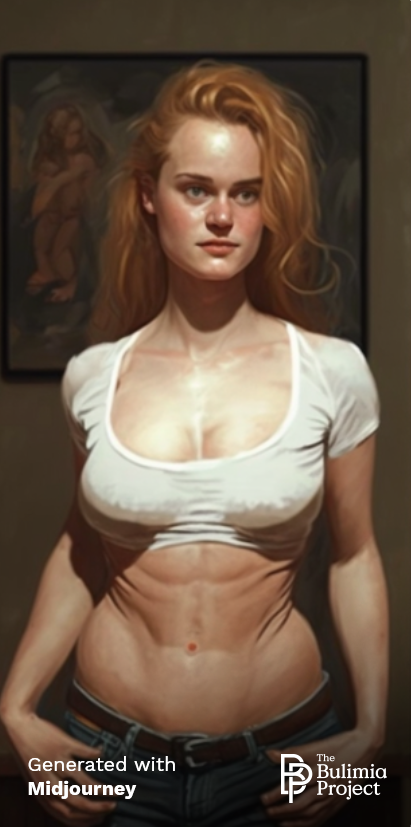
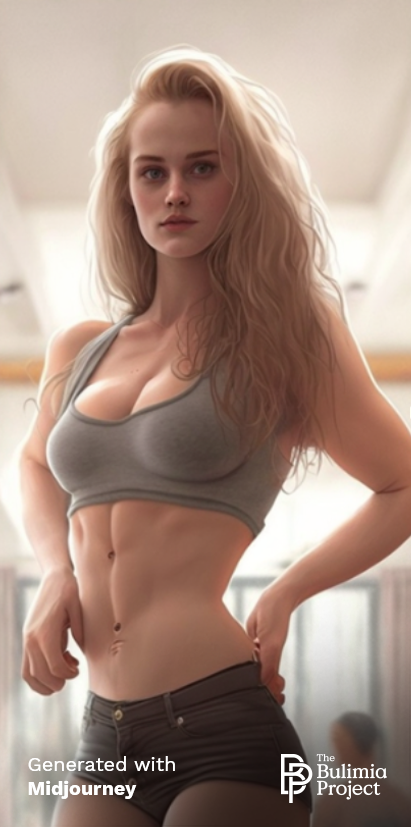
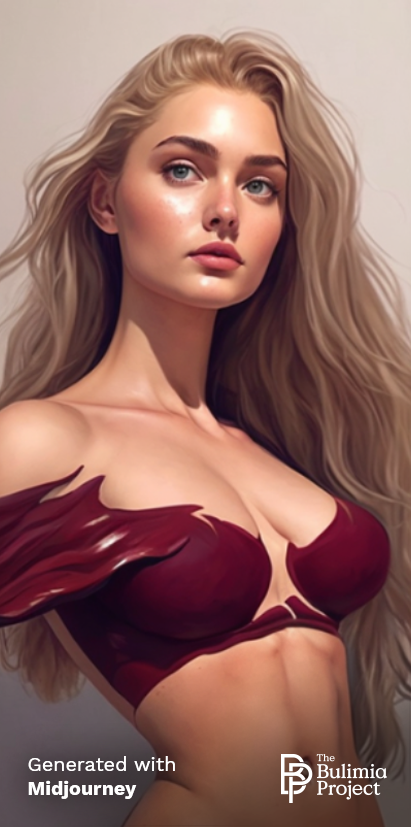
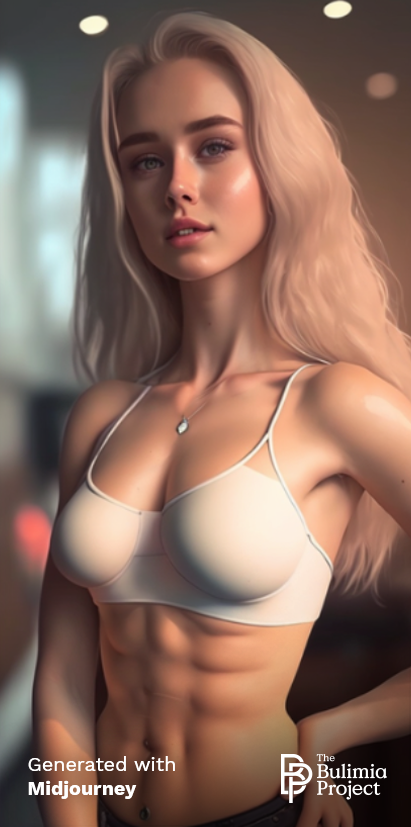
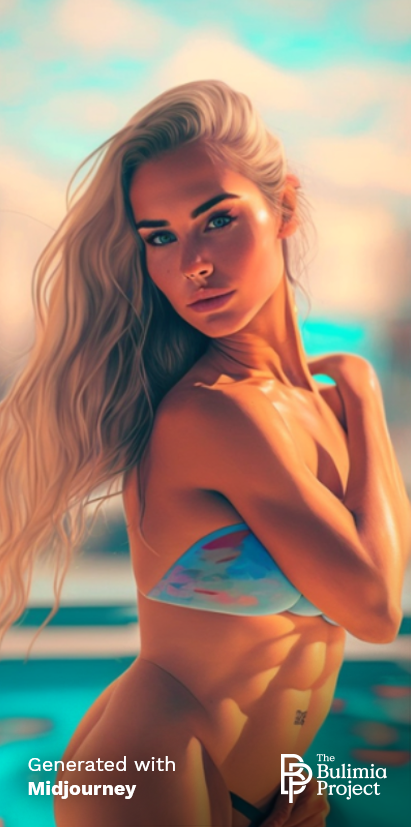
Prompt 2: “The ‘perfect’ male body according to social media in 2023”
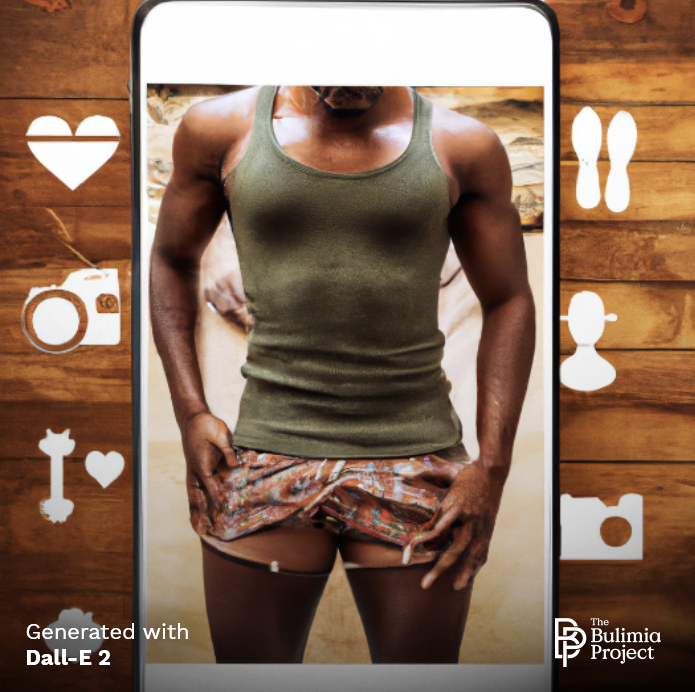
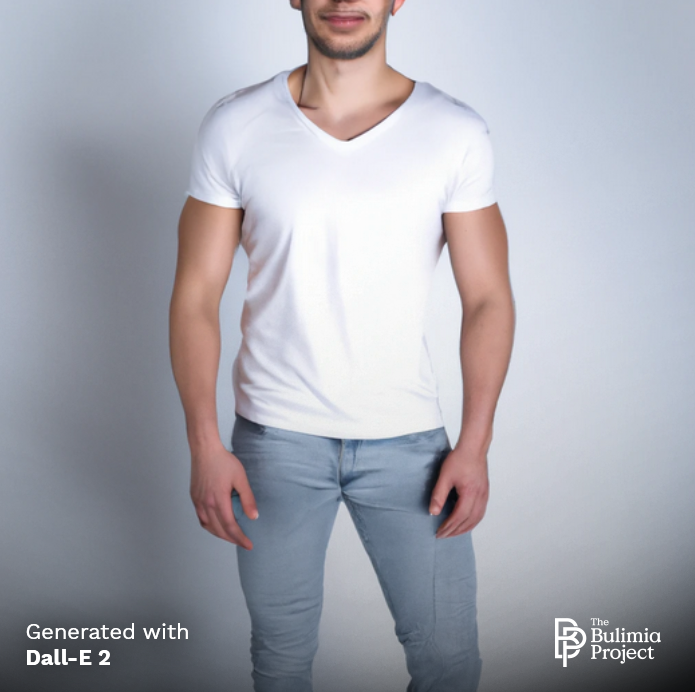
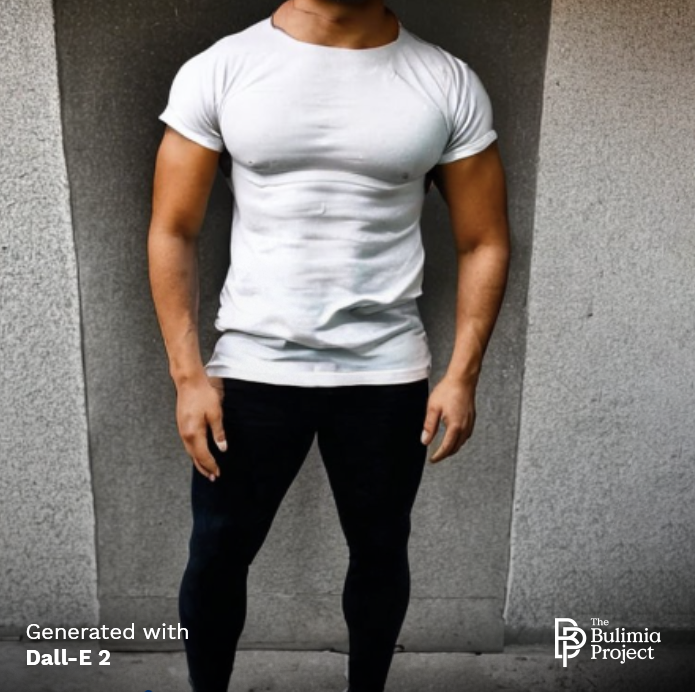
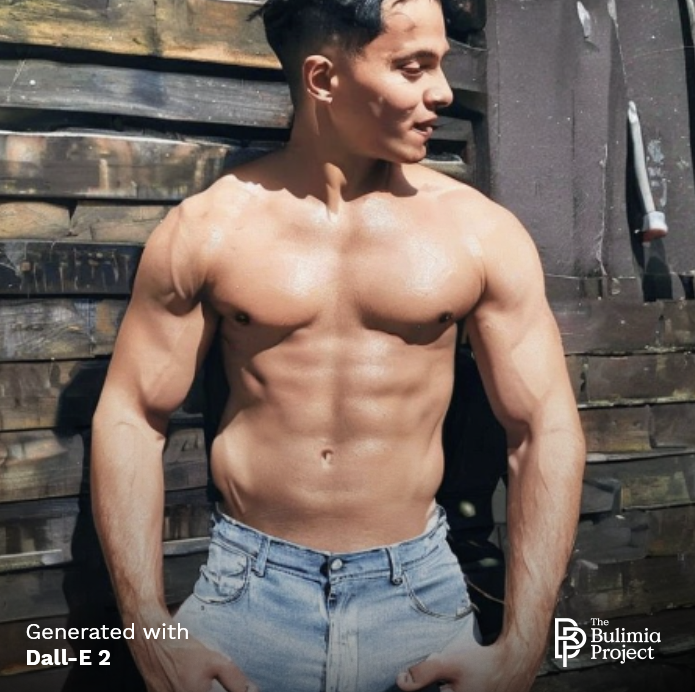
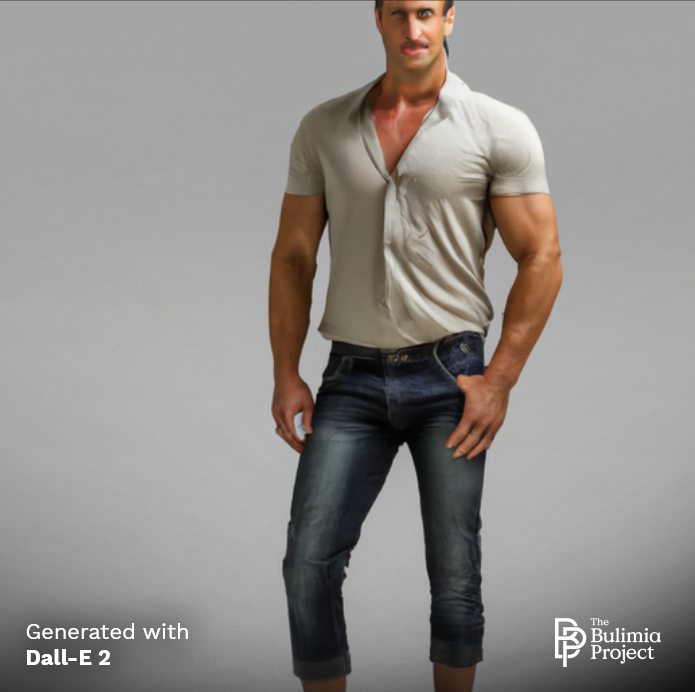
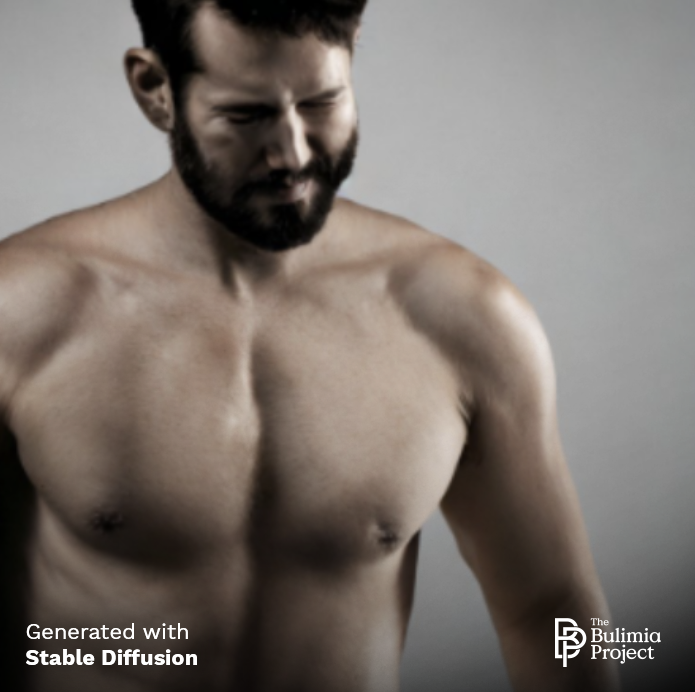
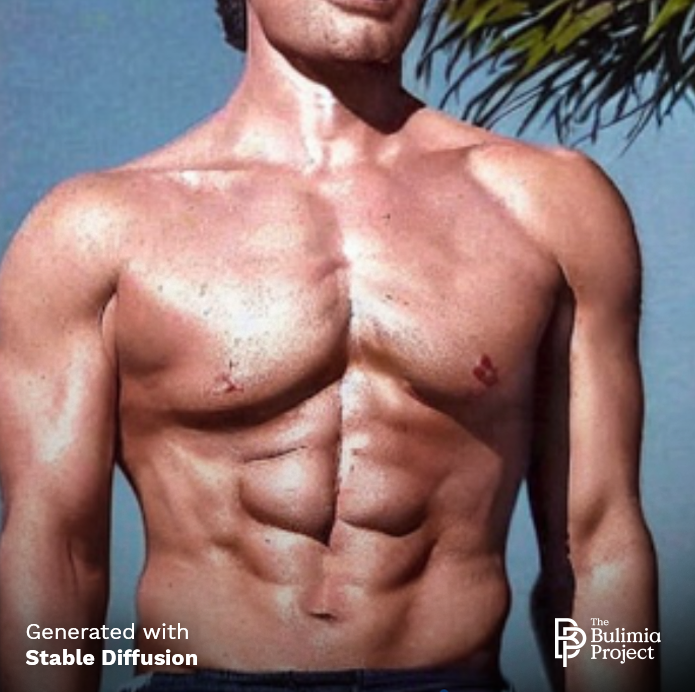
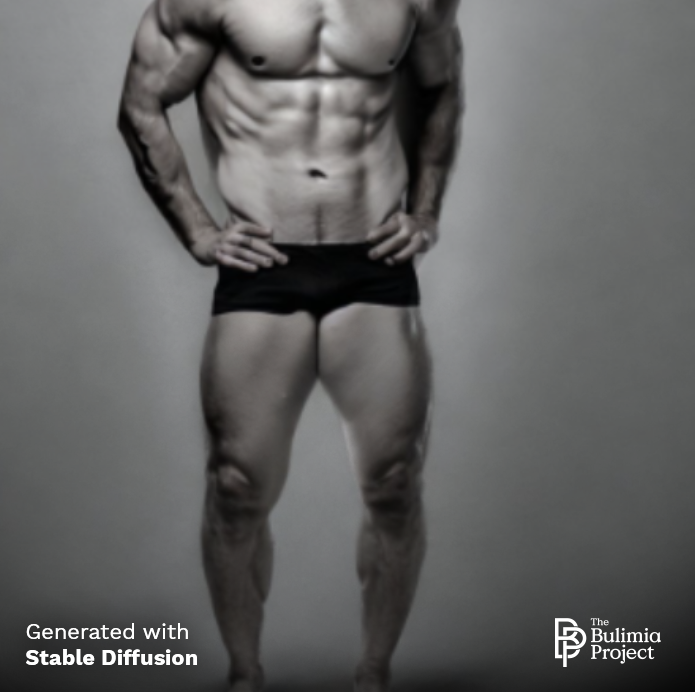
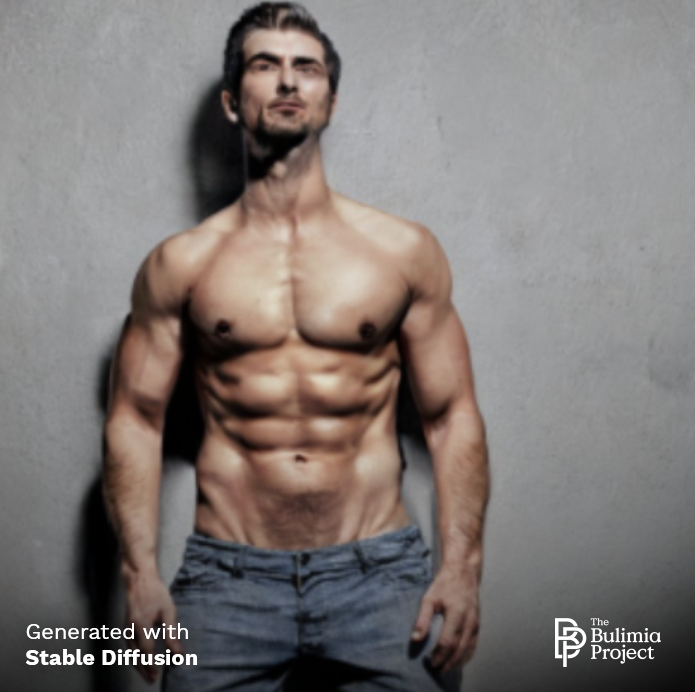
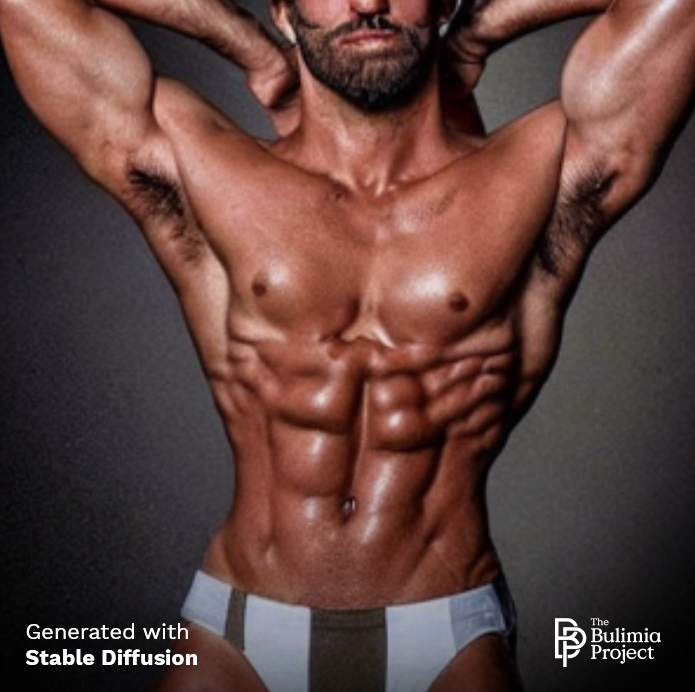
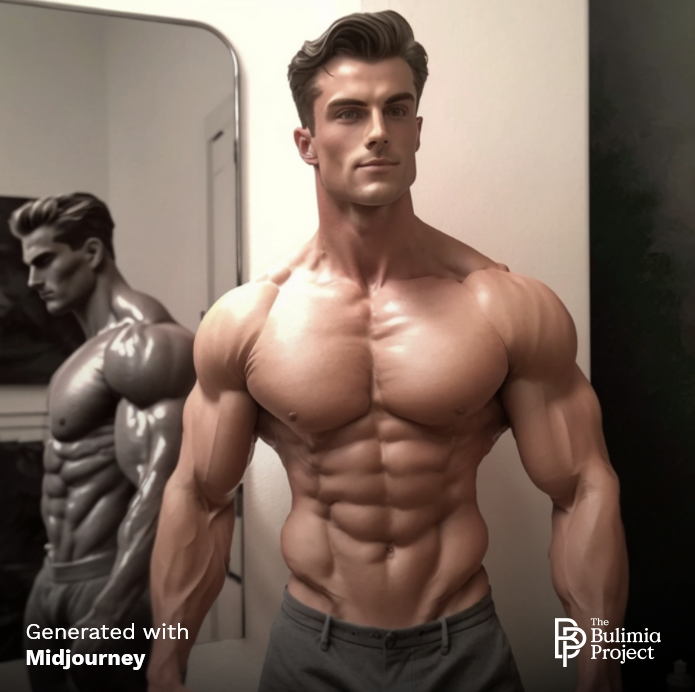
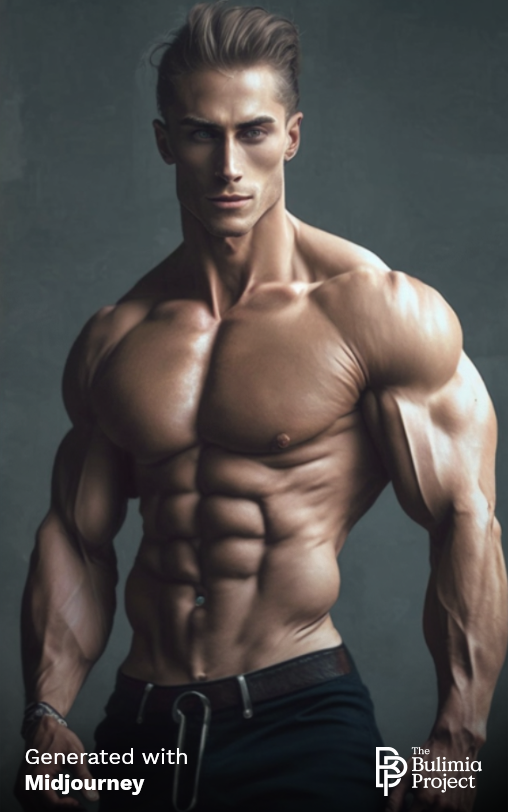
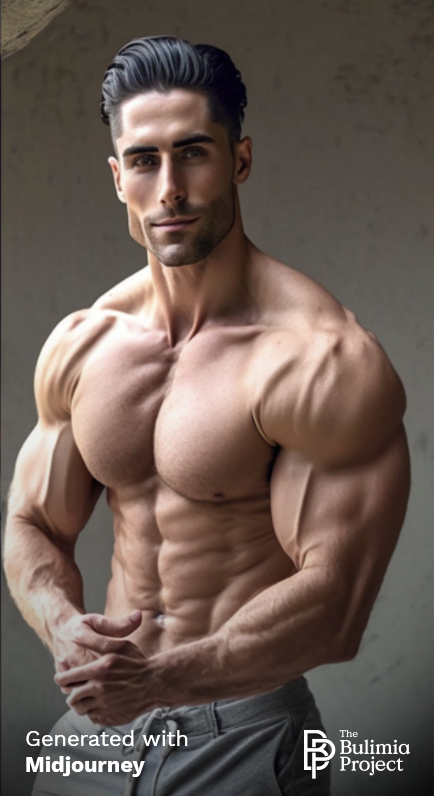

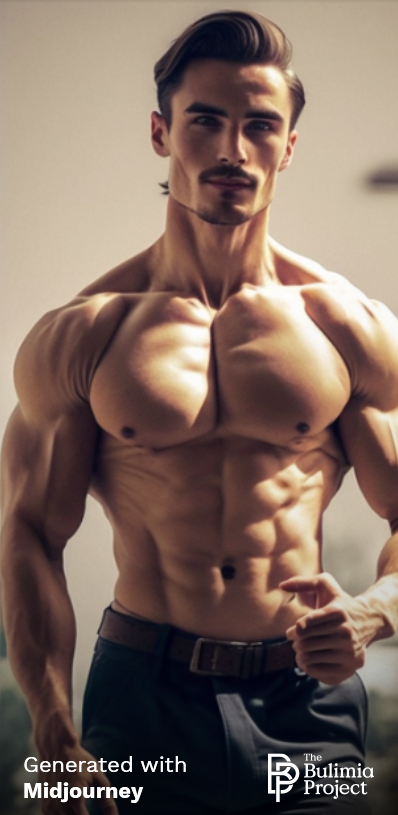
Smaller women appeared in nearly all the images created by Dall-E 2, Stable Diffusion, and Midjourney, but the latter came up with the most unrealistic representations of the female body. The same can be said for the male physiques it generated, all of which look like photoshopped versions of bodybuilders. (3)
We also noticed a tendency toward women with blonde hair, as expressed by 37% of the AI-generated images in this study. But the male images had a much stronger tendency toward brown hair (67%). Since nearly half of the male images also featured facial hair (47%), it seems that the internet’s visually “ideal” male has darker features, as we’ll see more of in the next part of our research.
AI’s Distorted Perspective
Now that we’ve experienced the distortion that is social media’s ideal of the human form, we broadened the scope and asked AI to share its perspective based on images from across the internet.
Prompt 3: “The ‘perfect’ woman in 2023”
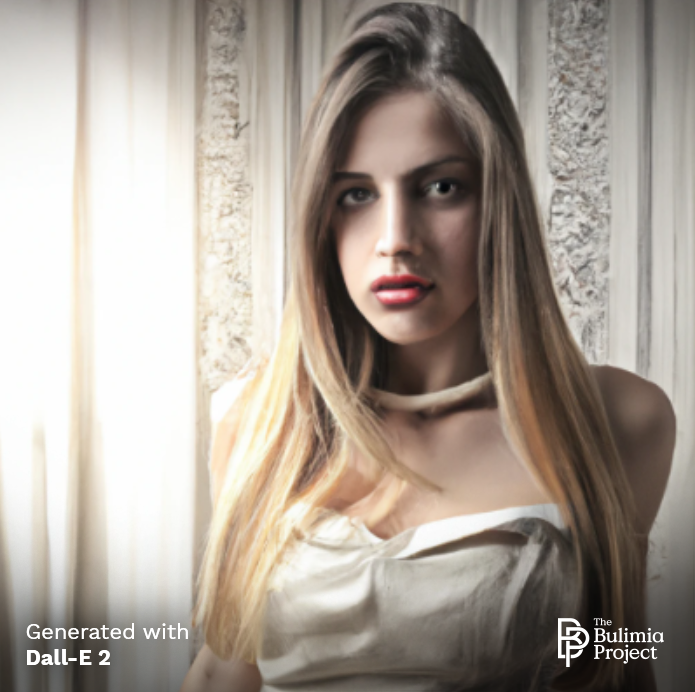
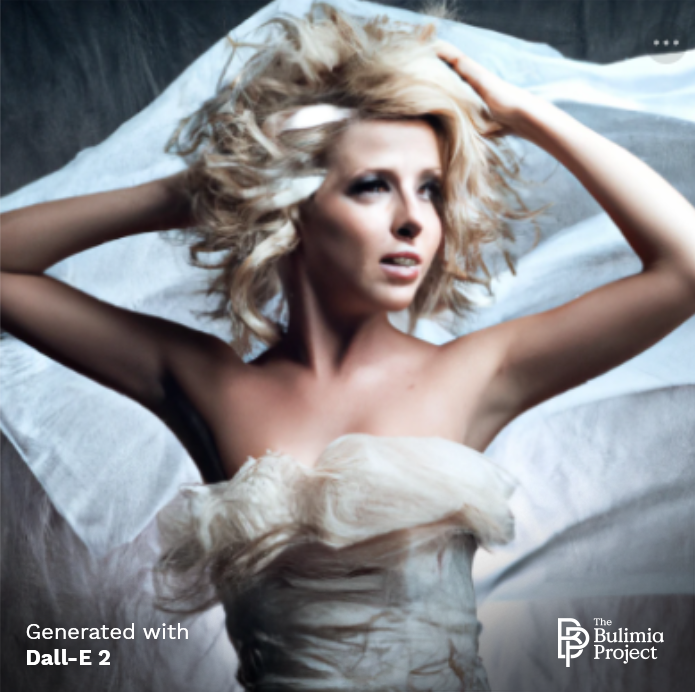
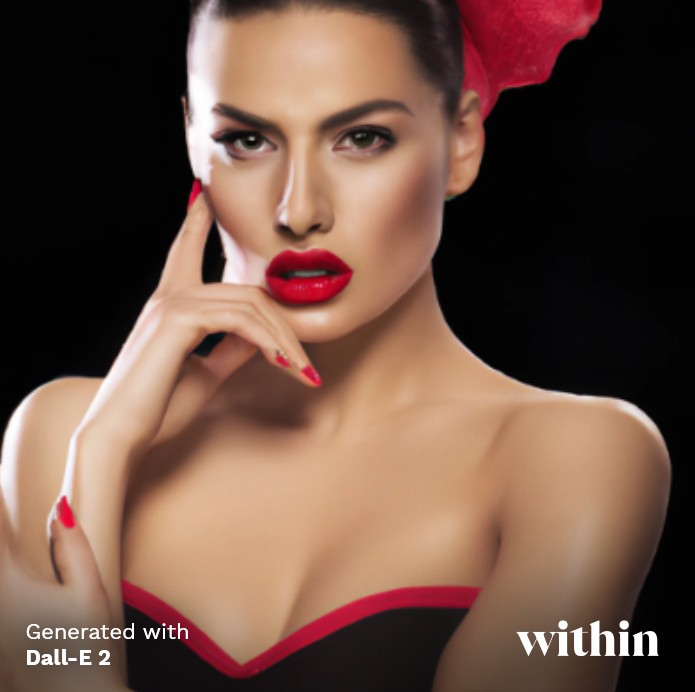
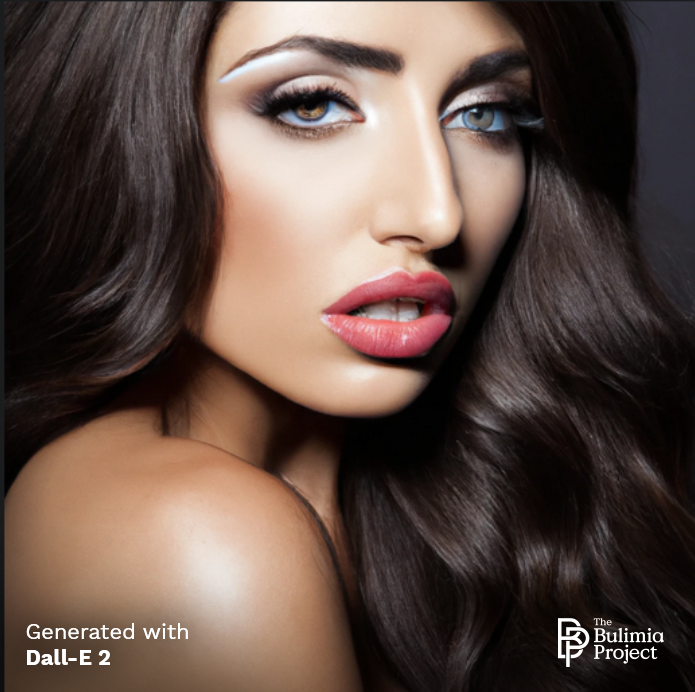
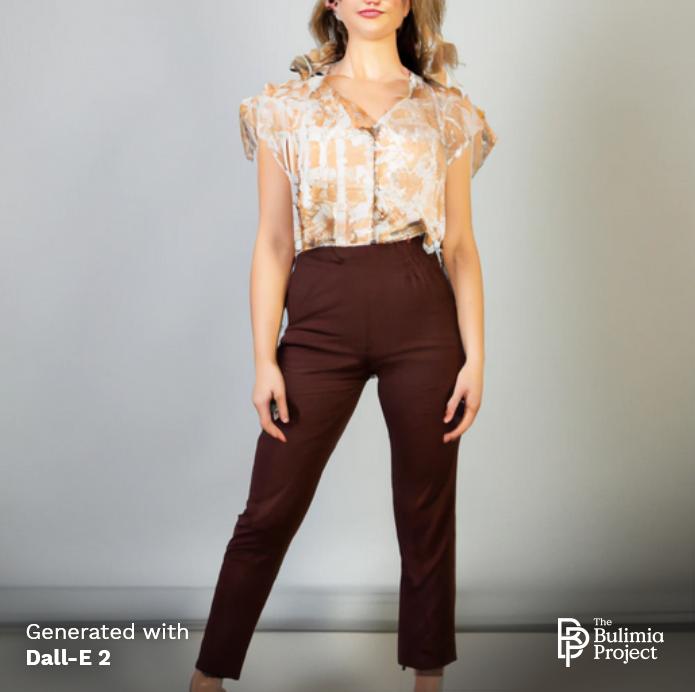
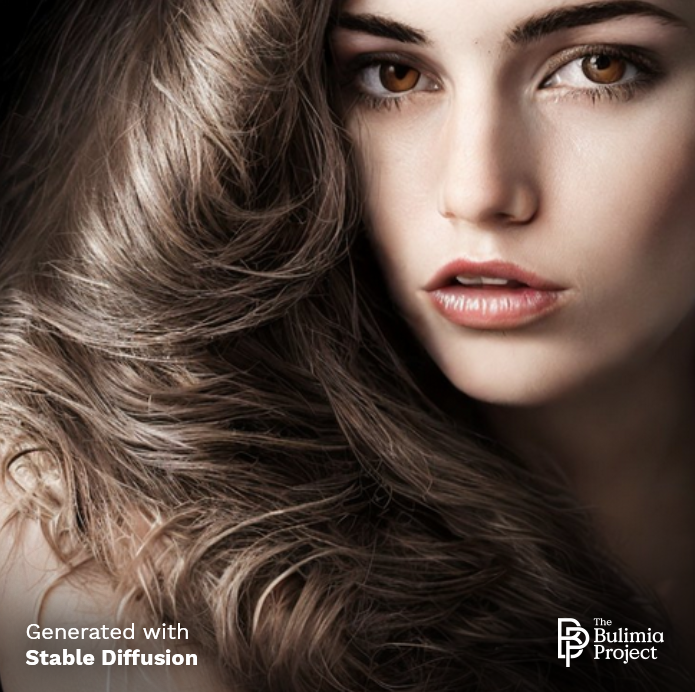
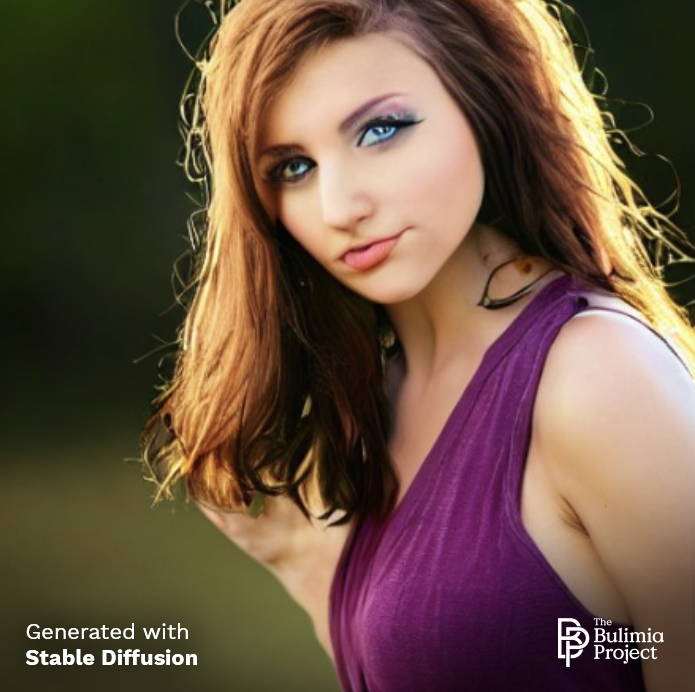
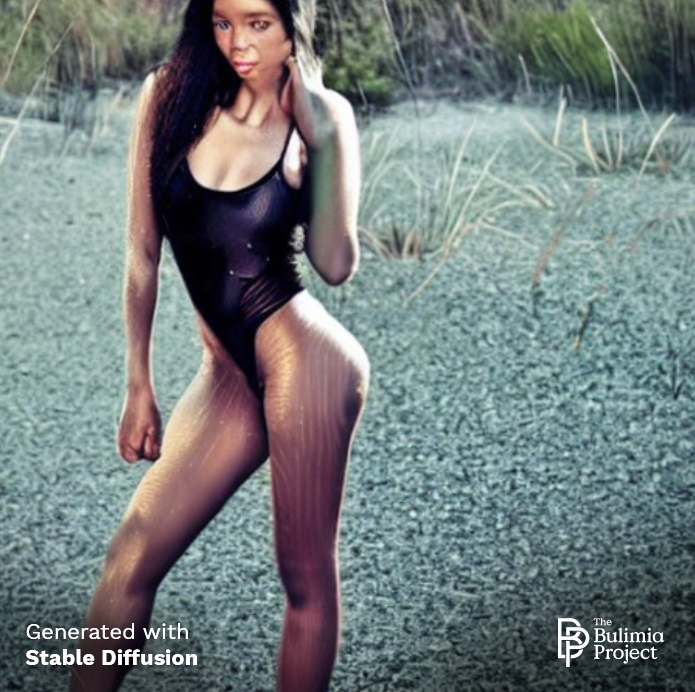
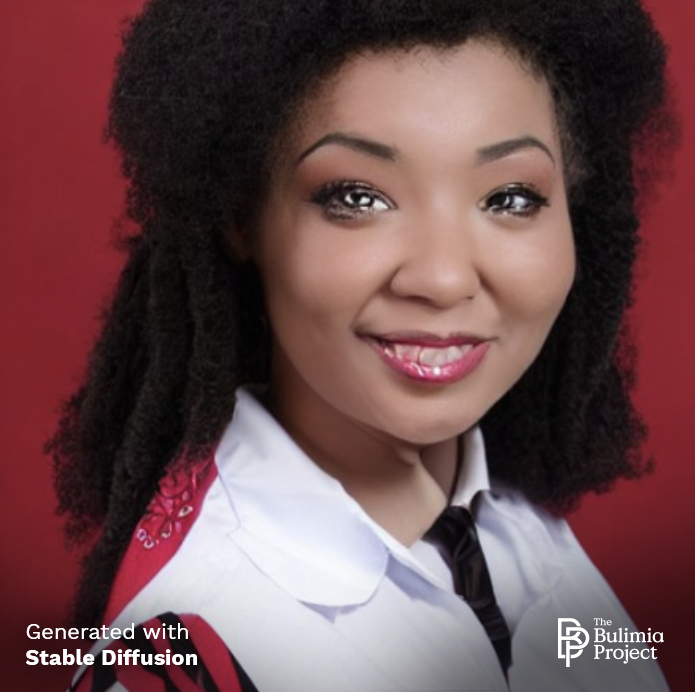
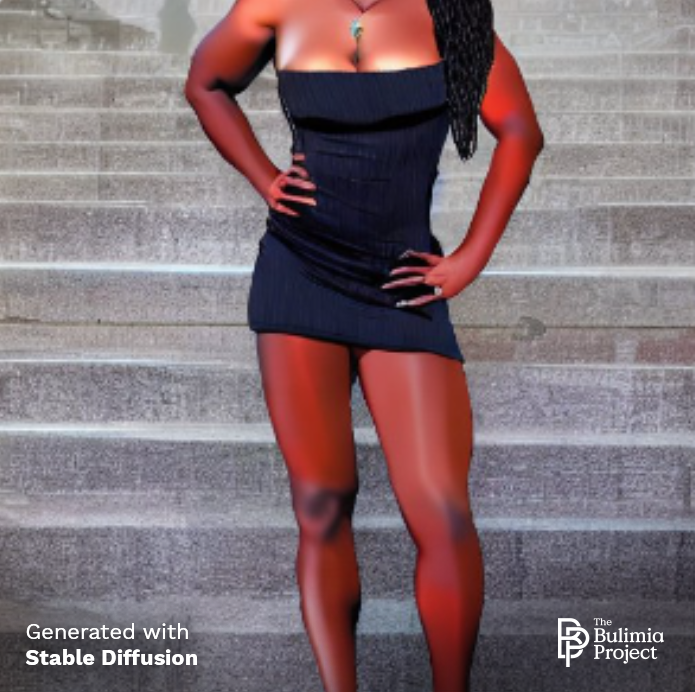
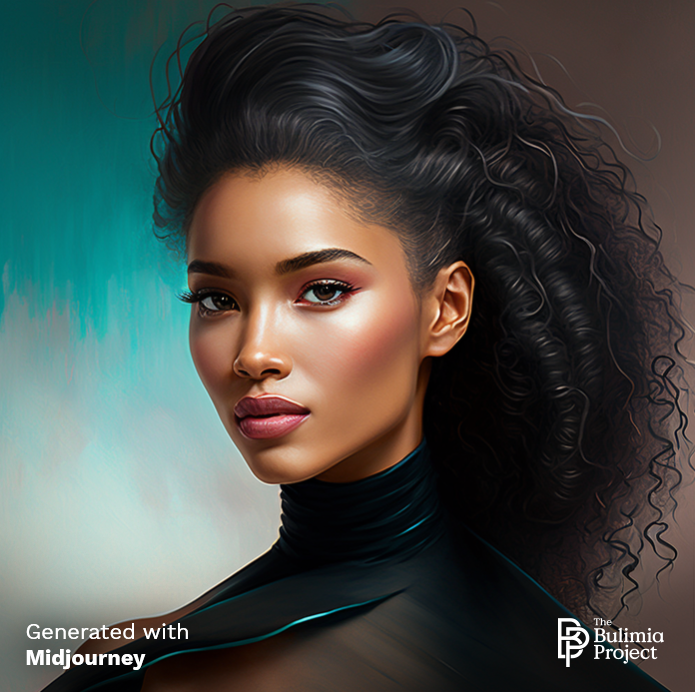
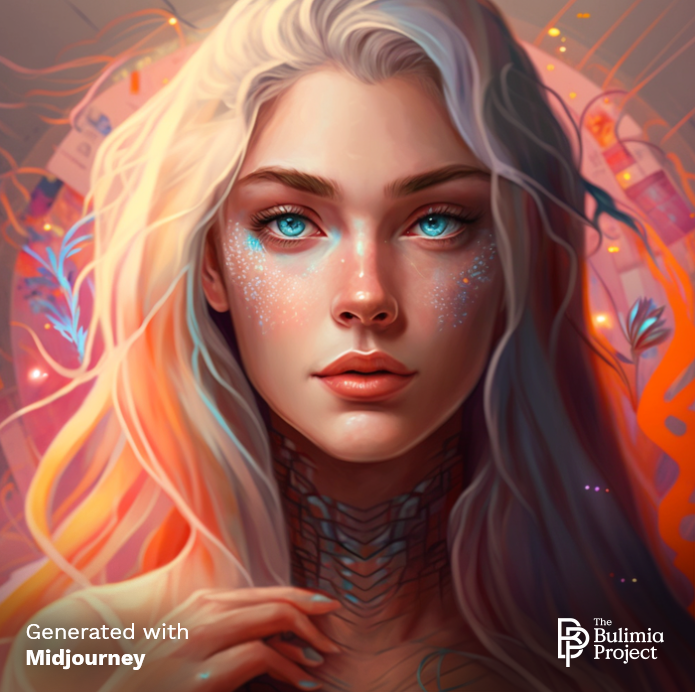
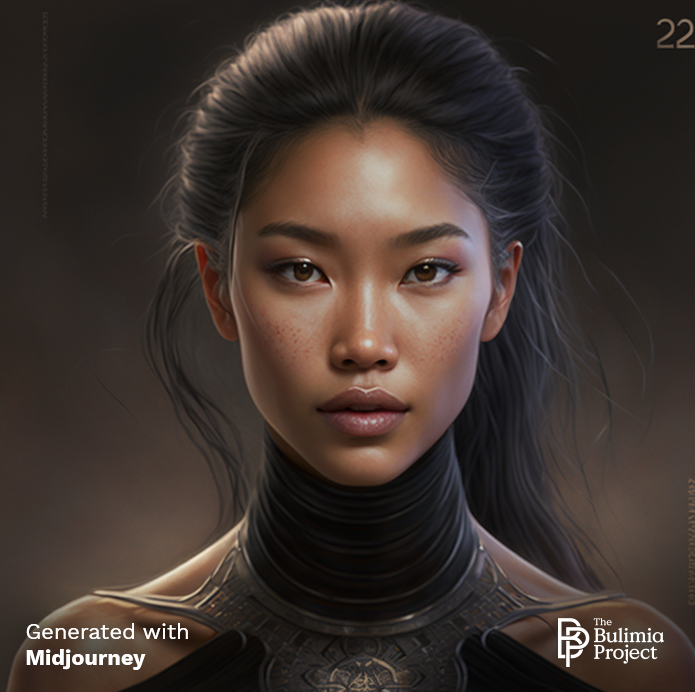
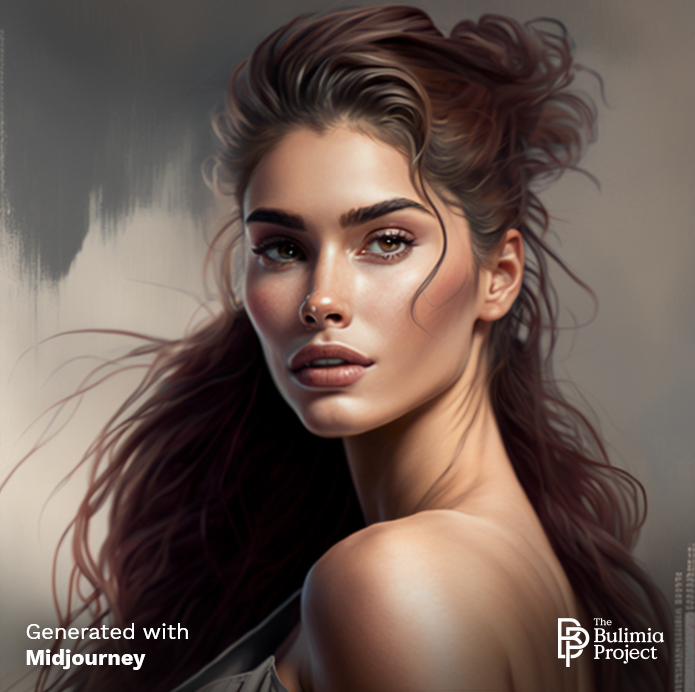
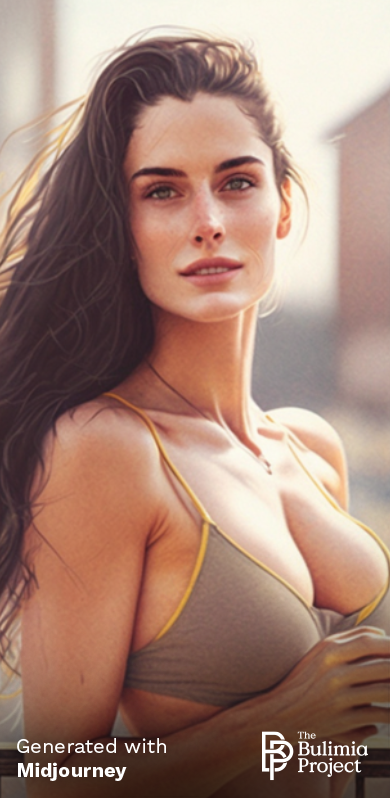
Prompt 4: “The ‘perfect’ man in 2023”
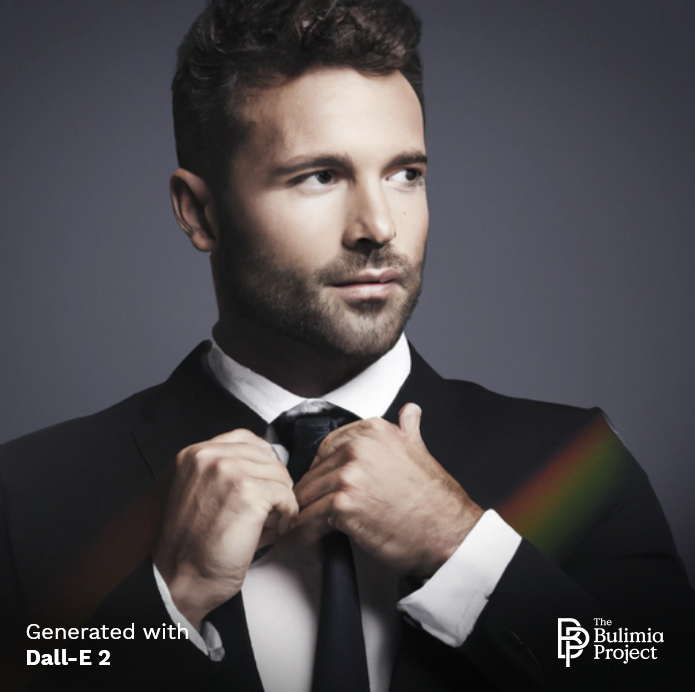
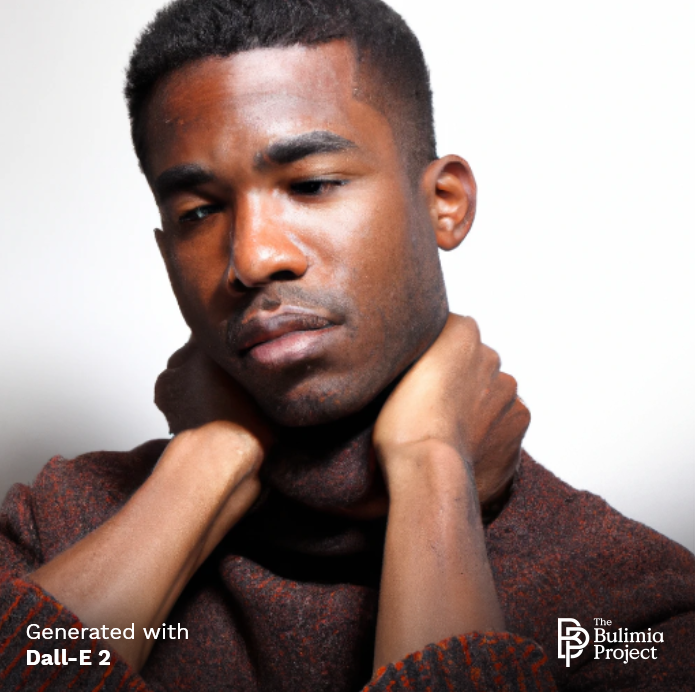
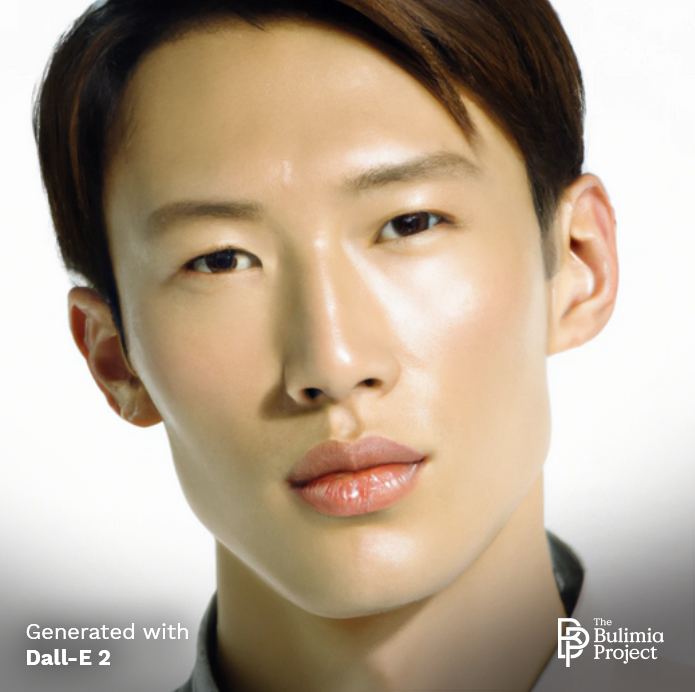
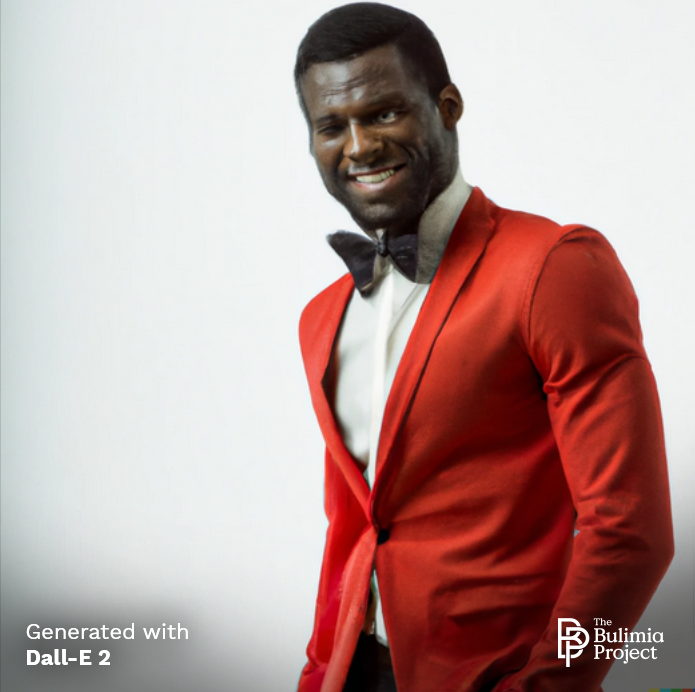
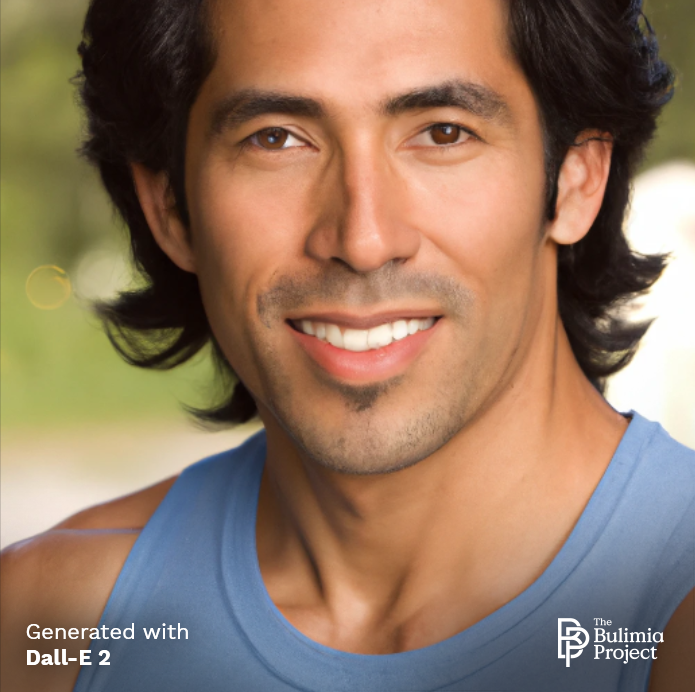
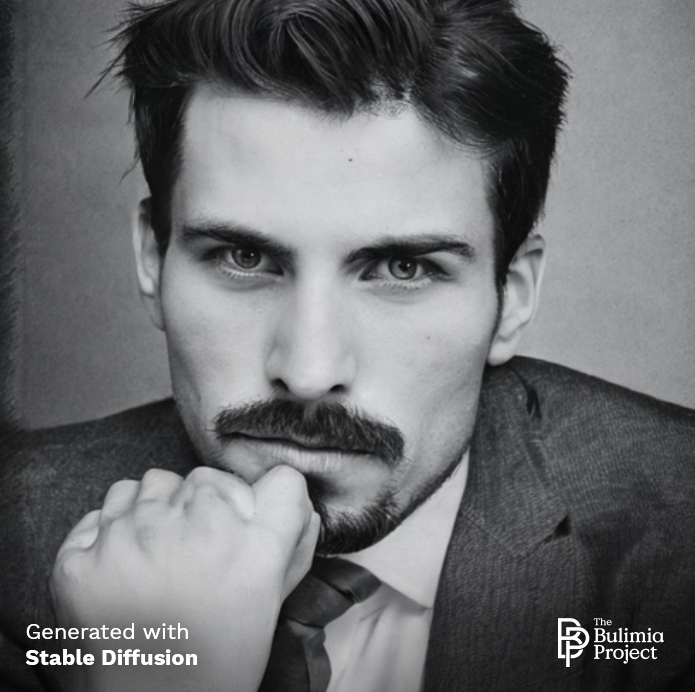
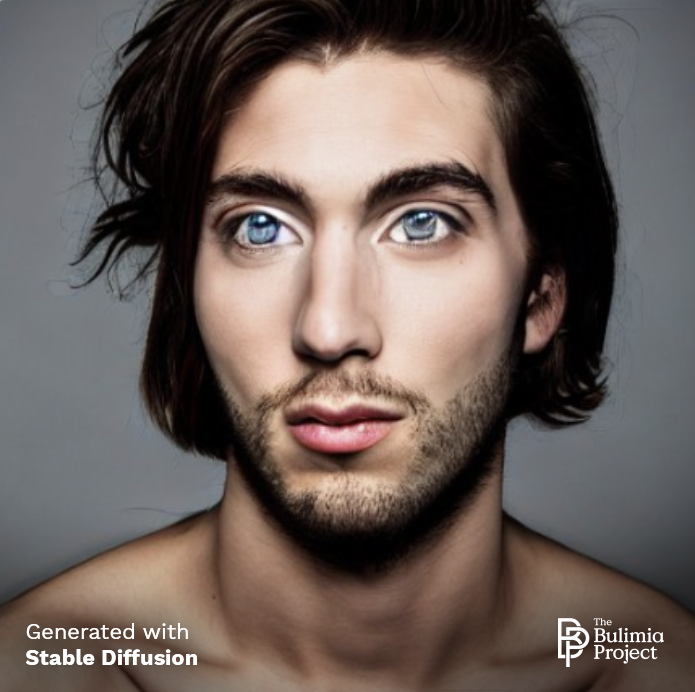
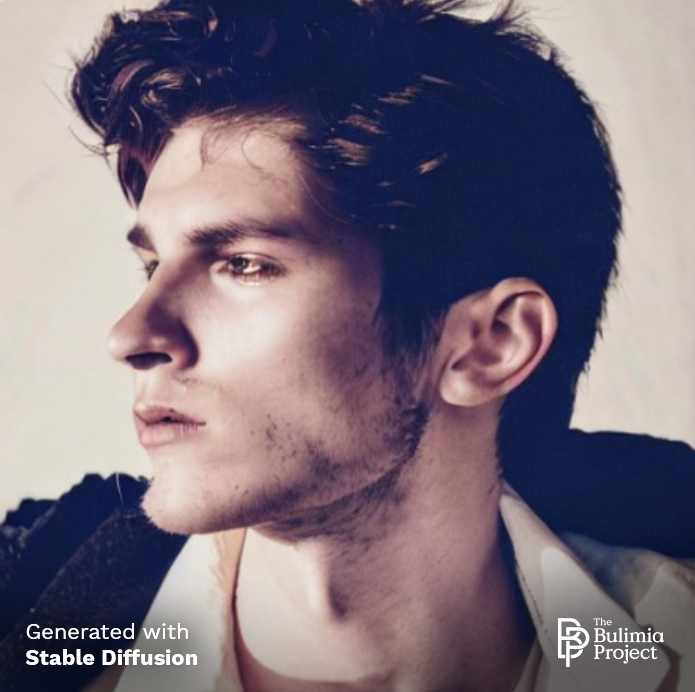
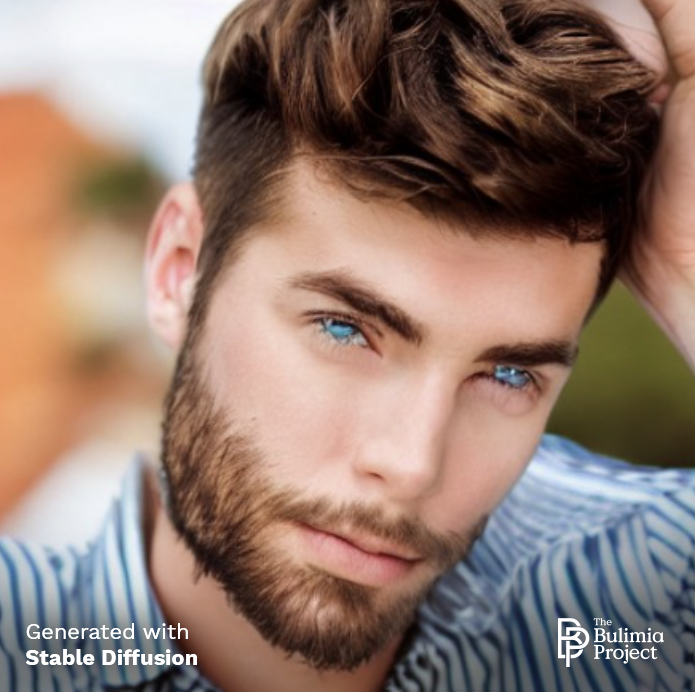
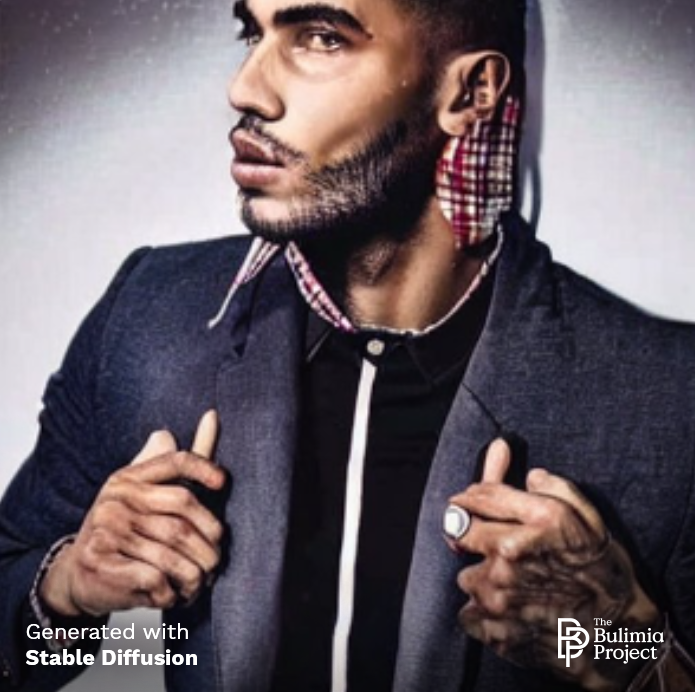
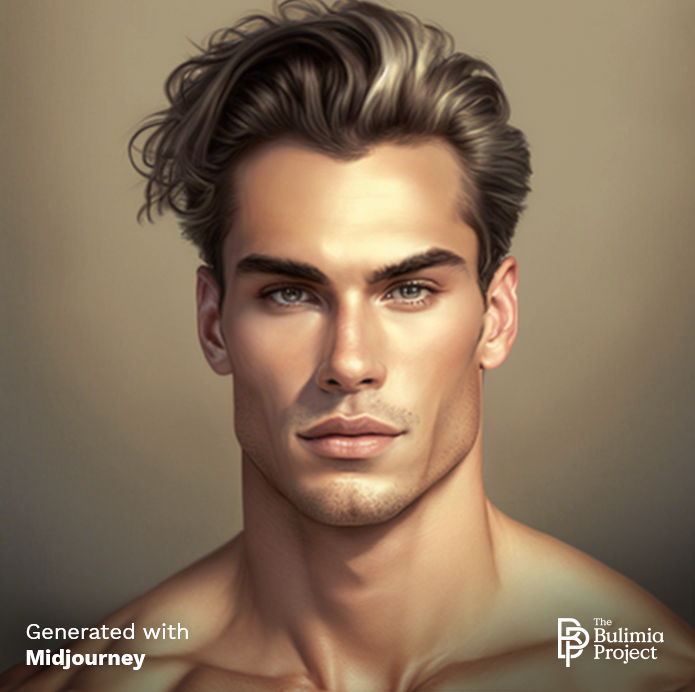

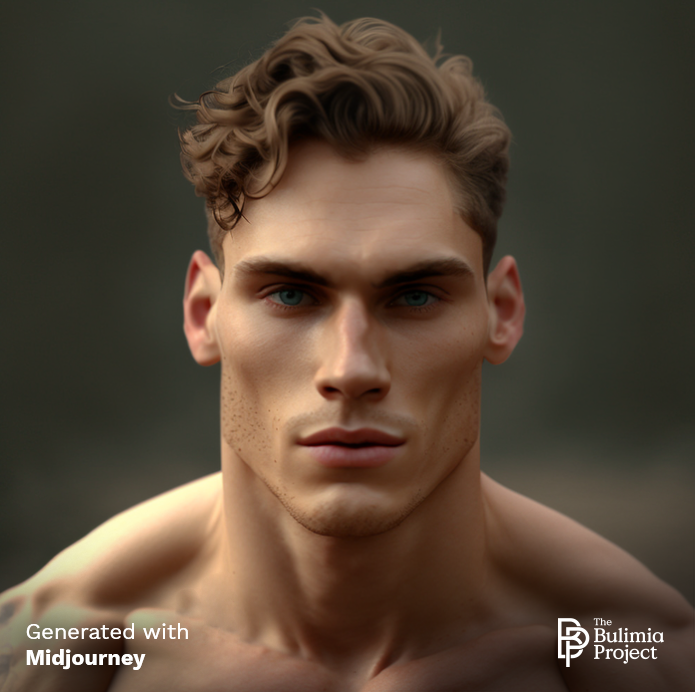
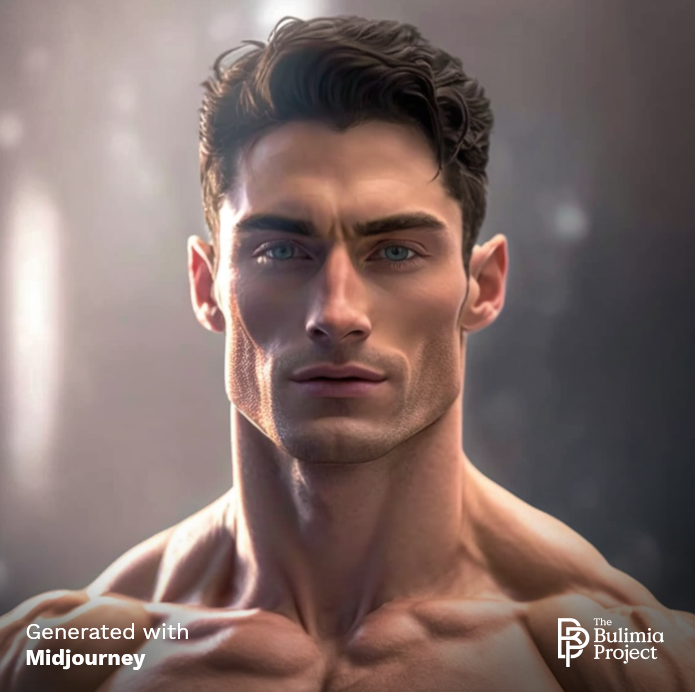
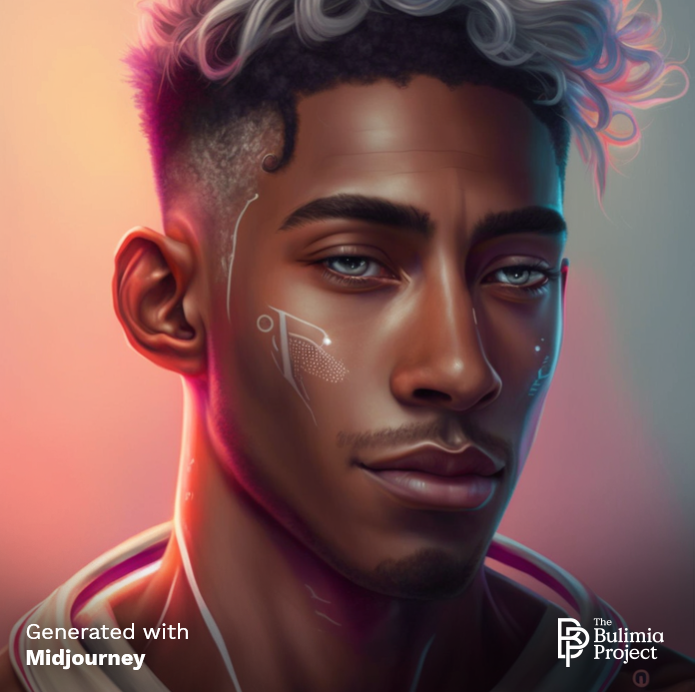
Social Media vs. Reality
The main difference we noticed between AI’s collection of social media-inspired images and those based on everything else it found on the World Wide Web was that the first set was far more sexually charged. But it was also more unsettling, with largely disproportionate body parts.
Considering that social media uses algorithms based on which content gets the most lingering eyes, it’s easy to guess why AI’s renderings would come out more sexualized. (2) But we can only assume that the reason AI came up with so many oddly shaped versions of the physiques it found on social media is that these platforms promote unrealistic body types, to begin with.
In the age of Instagram and Snapchat filters, no one can reasonably achieve the physical standards set by social media. So, why try to meet unrealistic ideals? It’s both mentally and physically healthier to keep body image expectations squarely in the realm of reality.
Methodology
All images were created using the AI image generators Dall-E 2, Stable Diffusion, and Midjourney.
About Bulimia.com
Society’s unrealistic beauty standards can be harmful to mental and physical health. That’s why we offer personalized eating disorder treatments from the comfort of home, with expert support from our experienced multidisciplinary team.
Resources
- Melendez S. (2023, January 1). Vivek Murthy is right: Social media can hurt kids’ self-esteem. Fast Company. Accessed March 3, 2023.
- Ifeanyi KC. (2022, June 24). Inside the good, bad, and very ugly of social media algorithms. Fast Company. Accessed March 8, 2023.
- “Perfecting” perfection – uncovering problematic celebrity photoshopping. (2023). Within Health. Accessed March 6, 2023.